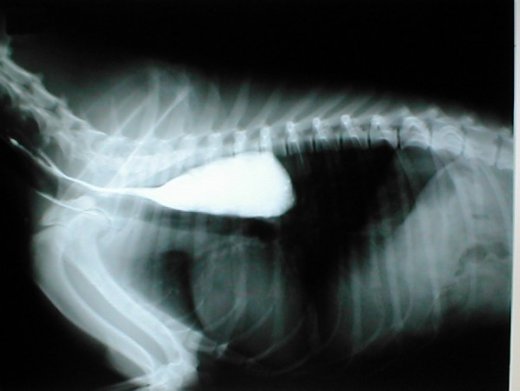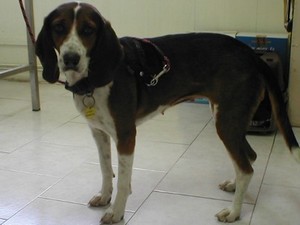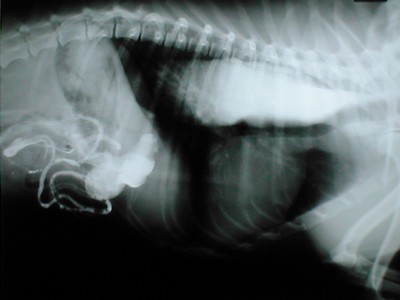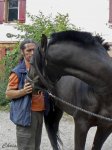After several further tests, the diagnosis of mega-esophagus is done. Radiographs are explicit.

A standard treatment based on pyridogstimine bromide is introduced. This treatment has been given for a while with mixed success when Tania is presented to the osteopathic consultation.
This first consultation reveals dysfunctions in C0, D4, D13, lumbosacral junction and esophagus, especially in the Meissner and Auerbach plexus which have respectively: defects in mobility and hyperactivity. The treatment, in addition to functional correction of vertebras dysfunctions, was to regulate the nervous activity by stimulating the Meissner plexus and reducing the Auerbach one. Medical treatment is maintained for the time being.

Following this first intervention, the bitch, showed severe fatigue for two days and then began to vomit several times a day for five days. At the next consultation, the esophagus seems to have stabilized, but the cardia was still in dysfunction and thyroid presented significant tensions. The next two consultations were aimed to work on these two points. Meanwhile, the medical treatment is gradually decreased.
The manipulation of the cardia is usually followed by vomiting for a few days, but without locomotion disorders, and phases without regurgitating.
At the last visit, there are no more dysfunctions and Tania isn’t vomiting anymore, despite treatment doses divided by 4.
Discussion
The dog’s esophagus is composed entirely of striated muscular fibers; smooth fibers are only present at the cardia. We can observe two strictures of the esophagus: one at the entrance of the thorax and one as it passes through the diaphragm.

The extrinsic parasympathetic innervation is provided by the vagus nerve, and the intrinsic parasympathetic innervation is represented by the Meissner and Auerbach plexus, located in the submucous and muscular layers of the gastrointestinal tract. These control peristalsis, secretion and myogenic activity of the esophagus.
The pyridogstimine inhibits acetylcholinesterase by binding to the anionic site of the enzyme. It therefore enhances the action of acetylcholine, increasing its concentration in synaptic cleft (called parasympatheticomimetic indirect action). Acetylcholine will bind to muscarinic receptors and thus will cause an increase in peristalsis and digestive secretions.



